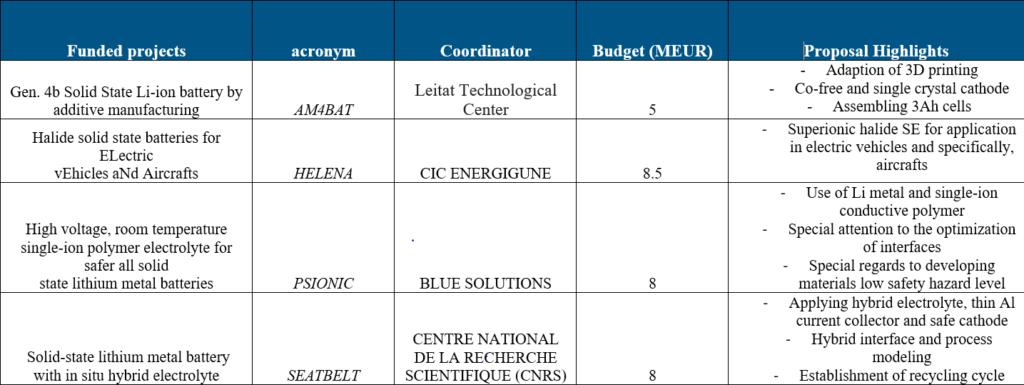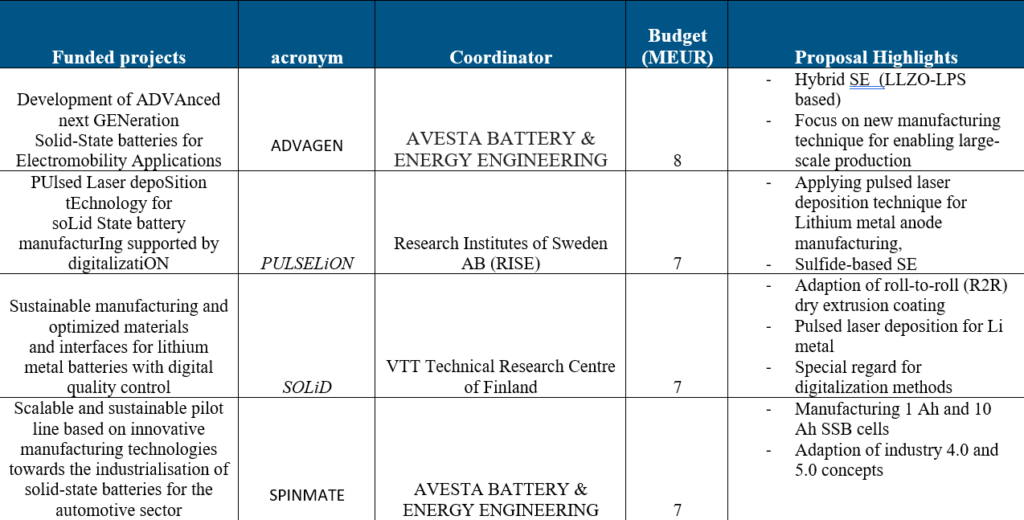The case for solid-state batteries
28 October 2022

Smart and novel cell designs improved quality through adaption of advanced manufacturing technology at lower costs. The continued efforts to optimize the material performance has delivered rapid progress in energy […]
Smart and novel cell designs improved quality through adaption of advanced manufacturing technology at lower costs. The continued efforts to optimize the material performance has delivered rapid progress in energy density and affordability of liquid electrolyte lithium-ion batteries (LIB) employed in electric vehicles and as stationary storage in the grid. Yet, the limits of LIB are anticipated to be near.
Despite the improved characteristics of LIB cells in recent years, marginal rise in the performance capability (e.g, energy density and charging time) of the cells signals the need for alternative or next generation technologies. Moreover, safety matters are becoming a concern due to the presence of organic and flammable electrolyte in conventional LIBs which prevent a range of applications from replacing their fuel source with batteries.
Solid-state batteries (SSB) present a convincing performance prospect that promise a competitive alternative to the current liquid electrolyte LIBs. In SSBs the flammable liquid electrolyte is replaced mostly by inorganic solid electrolytes (SE). The electrolyte substitution offers solutions to many issues of LIBs, such as voltage window limitation, instability of electrolyte/electrode interface and opens the possibility of extensive use of lithium metal anodes which in turn offers considerable benefits in terms of cost and weight.
The technology can enhance the adaption of electrification in other sectors, such as aviation where the conventional lithium-ion batteries fail to comprehensively meet the requirements. Notable advancements in safety, high energy density, fast charging and reduced environmental footprint are among the many key performance indicators (KPI) that SSBs are potentially capable of improvement.
European R&I activities on solid-state batteries in Horizon Europe programme
Advanced Li-ion batteries facilitate the user acceptance and will help to reduce GHG emissions of the transport sector: within this framework, they will be supporting EU’s efforts to become climate-neutral by 2050. Innovation on advanced materials contribute to the creation of a sustainable European battery manufacturing value chain, and secures the future of its giga-factories.
The European funding of solid-state electrolytes research has already been initiated in one of 2019 work programmes (LC-BAT-1-2019) in the framework of Horizon 2020 programme. The importance of development of solid-state batteries has been underlined in the BEPA Strategic Research and Innovation Agenda, published in June 2021, where batteries with solid state electrolytes are classified as 4th generation of lithium-ion systems. The strategic research actions outlined in the SRIA target the following three subcategories:
- 4a: Solid electrolyte + NMC cathode + C/Si composites
- 4b: Solid electrolyte + NMC cathode + Li metal
- 4c: Solid electrolyte + High voltage cathode (≥ 4.75 V) + Li metal
The strategic R&I actions for SSB development and mass production propose short term (2022-2025) Research Actions (RA) to be focused on electrolyte and Li anode development. These activities are to be followed by targeting higher TRLs through Innovation actions (IA) in mid-term (2025-2028), along with long-term concrete activities of upscaling and uptake by 2030 and beyond.
Our SRIA defined the KPIs for solid-state batteries as:
- Gravimetric energy density: at cell level of 400+ Wh/kg
- volumetric energy density: at cell level of 800+ Wh/l (Gen 4a) progressing to 1000+ Wh/l (Gen 4b and 4c)
- Cycle life up to 3000
- Charging rate: 3-5C
- Cost: at pack level 75 EUR/kWh
The disruptive next generation of lithium-batteries will not only have to incorporate one single material innovation, but a number of changes in all parts of the battery cell and respective production process. To keep up with the pace of progress in non-European countries, parallel actions must be taken toward enabling the large-scale manufacturing of solid-state batteries. European giga factories should be equipped with sufficient research-driven knowledge to adapt to new battery chemistries with minimum additional capital cost. In addition, a considerable number of announced giga factory projects will approach to full capacity when the material and cell development for Gen 4. are expected to fulfill their KPI targets, which necessitates immediate provisions for innovation uptake.
To accelerate the roll-out for SSBs for electric mobility, the Batt4EU Partnership has introduced two calls addressing the material development and manufacturing of generation 4 lithium-ion batteries in the 2021 Horizon Europe work programme. The winning proposals has already been announced and the projects have officially launched in Summer 2022. All projects are composed of teams of consortiums that cover large parts of the value chain, and include leading European representatives from university research centers to OEMs.
HORIZON-CL5-2021-D2-01-03: Advanced high-performance Generation 4a, 4b (solid-state) Li-ion batteries supporting electro mobility and other applications
An EU contribution of 8-9 million Euros for a total of four projects (36 million in total) was foreseen in the call, where the activities are expected to achieve TRL 5 by the end of the project. Aside from the aforementioned KPIs for the electric vehicles, the call expects the charging rates of up to 10C for aviation purposes and energy density of >500 Wh/kg for other sectors such as heavy-duty.
The expectations for Gen 4a. (solid state with conventional materials) batteries include reducing the anode thickness, increasing solid electrolyte conductivity while confining the electrolyte thickness, improving interface design and developing coating strategies for current collectors.
For Gen 4b (solid state with Li metal-based anode materials) projects are expected to improve the characteristics of electrodeposition process; find novel solutions for Li metal manufacturing; and accelerate application of new materials at every level of cell components to increase the energy density.
The following table lists the announced projects for this call:

HORIZON-CL5-2021-D2-01-05: Manufacturing technology development for solid-state batteries (SSB, Generations 4a – 4b batteries)
An EU contribution of 6-7 million Euros for a total of four projects (26 million in total) was foreseen in the call, where the activities are expected to achieve TRL 5-6 (up to pilot-level proof of concept) by the end of the project.
The call aims to position Europe at the industrial production lead in the international race for next generation, SSB technologies all through the value chain. The proposed technological advancements in production should be extended to core components of solid-state batteries, from electrolytes to Li metal anode, while preserving the environmental objectives such as low-emission and low carbon footprint.
The topic calls for development, and, if necessary, reinvention of processing routes, such as finding novel approaches to compatibility challenges, originated from electrode-electrolyte coating. Integration of digitalization in production lines is another crucial element to enable achievement of production at economy of scale with reasonable product costs.
The following table lists the announced projects for this call:


